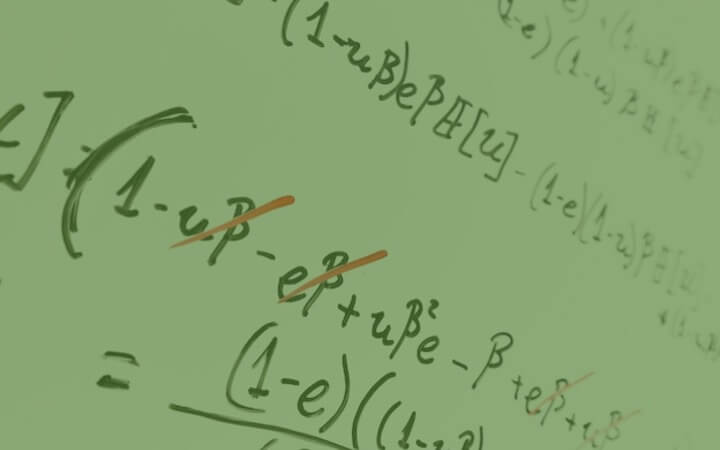A Step-by-Step Guide to Section One of the Physics Admissions Test
Some say that you need to be amongst the most academically gifted to get into the Oxford Physics programme, but many would disagree. To truly have a good chance of admission, an applicant has to be the best prepared. Below is a tried-and-tested framework to acing Section 1 PAT built by our PAT mentors and experts.

What is the PAT? A Brief Summary
The Physics Admissions Test (or PAT) is an entrance exam. It is used in the admissions process to study physics, engineering, material sciences and similar degrees at Oxford. For more information, please read our guide to the Oxford PAT.
The PAT consists of 100 marks in 2 hours, lending just over 1 minute per mark. It is a fast-paced test to say the least. Furthermore, it is split into PAT Section 1 and 2. There are a set of multiple choice questions and a set of longer questions respectively. The PAT does not have a confirmed number of questions. However, it typically has between 20 and 25 questions total over the two sections. For a step-by-step guide on Section 2 of the PAT, consider this article. Section 2

Admissions Overview of Section 1 PAT
Admissions statistics from previous years reveal that the Oxford Physics competition ratio stood at 9:1. This means that there were approximately 9 applicants per seat for a total of roughly 200 seats on the Oxford Physics course, as shown here. Whilst shortlisting for most interviews begins at scores of 40%, all of the candidates who scored upwards of 65% received an interview.

The Section 1 PAT consists twelve 5-option questions, each worth two marks. This gives us just under a quarter of our marks on shorter multiple-choice questions. Moreover, to maximise your score on PAT Section 1, you must consider efficiency and strategy, not just candid intelligence.
PAT Section 1: General Advice
Below is a compilation of the top 5 tips as told by those who have themselves scored highly on the PAT and secured positions at Oxford.
- Use Past Papers and PAT Resources. PAT is the first step to securing a well-deserved position at Oxford. PAT past papers are, by far, the best tool to be used in preparation for the PAT as they give familiarity with the question styles. They also allow you to practise under exam conditions, and most effectively highlight academic strengths and weaknesses. Utilise physics aptitude test preparation resources such as physical preparation podcasts. This also includes physics aptitude test past papers.
- Never leave a question blank. There is no negative marking in the PAT. If a candidate is unsure about any question, they should always leave an educated guess. This gives a 1 in 5 chance of getting it correct.
- Manage your time effectively. With 1.2 minutes per mark, one cannot afford to waste time on questions that aren’t understood. As aforementioned, students should leave an educated guess and flag the question to return to after the rest of the paper has been attempted.
- Analyse the syllabus. As explored here, applicants should breakdown the syllabus to adequately reflect on personal strengths and weaknesses in their knowledge. It is also vital to work particularly hard on your weaknesses. But don’t ignore stronger areas lest you fall behind in those topics.
- Keep calm and focused. This cliche is far easier said than done. But the PAT is meant to challenge and intrigue students who are interested in physics. A student who has prepared to the best of their ability is more likely to stay level-headed in the final exam.
Exam Technique
As alluded to in the general advice, you should always use PAT past papers and simulate exam conditions to get the best out of your physics aptitude preparation time. Oxbridge Mind provides physics aptitude test past papers solutions to each PAT past paper. These can also be useful for marking your work and understanding the best way to approach a given question.
Section 1 is far more time-pressured than Section 2. However, the latter is worth more marks and so it is recommended that you prioritise Section 2 before moving back to Section 1.
The key to PAT Section 1 is not to get drawn in by the concept of multiple choice questions being supposedly easier. Moreover, these questions are often designed to test applicants’ general knowledge, physics intuition, or pattern spotting. They will also take up an unwary student’s time, ensuring that they do not get enough time on the longer questions in Section 2. If an applicant is stuck on a multiple choice question, it is also strongly advised that they leave a guess and move on. There will also be more opportunities to score points later.
How might a student complete these multiple choice questions faster?
- Eliminate answers that are wrong. If it is possible to eliminate 4 of the 5 answers quickly by pointing out clearly incorrect options, then that’s a free mark without doing the required calculations.
- Use physics and maths intuition. If a student is taking the PAT, chances are that their intuition is good. Moreover, if a particular answer feels wrong or right, it probably is.
- Finally, writing your logic and working as you go is highly recommended. It is two marks for a single question. Also, though Oxford has never released an official mark scheme for their entrance tests there is a good chance that a decent line of logic will score a single mark even if the final answer is incorrect.
To summarise, a student wishing to do well on the Physics Admissions Test just needs to work consistently in physics aptitude test preparation. Furthermore, with a little patience and a lot of practice, it is entirely possible to score highly in the PAT! For information on Section 2 of the PAT, consider this article. Section 2



